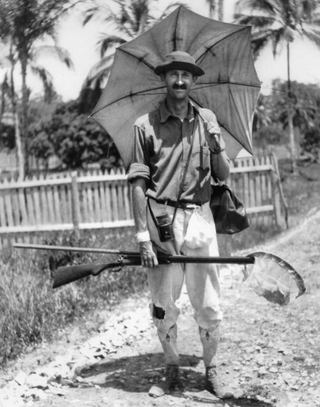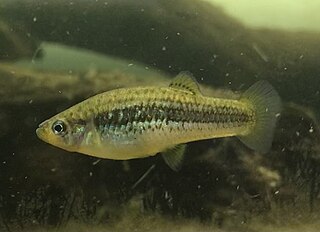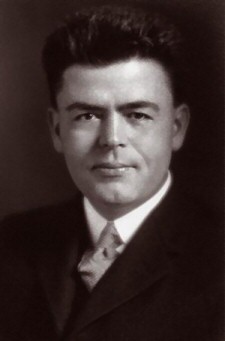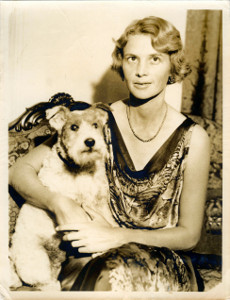
Ichthyology is the branch of zoology devoted to the study of fish, including bony fish (Osteichthyes), cartilaginous fish (Chondrichthyes), and jawless fish (Agnatha). According to FishBase, 33,400 species of fish had been described as of October 2016, with approximately 250 new species described each year.

CharlesWilliam Beebe was an American naturalist, ornithologist, marine biologist, entomologist, explorer, and author. He is remembered for the numerous expeditions he conducted for the New York Zoological Society, such as the Arcturus mission, his deep dives in the Bathysphere, and his prolific scientific writing for academic and popular audiences.

The European sprat, also known as brisling, brisling sardine, bristling, garvie, garvock, Russian sardine, russlet, skipper or whitebait, is a species of small marine fish in the herring family Clupeidae. Found in European, West Asian and North African waters, it has silver grey scales and white-grey flesh. Specific seas in which the species occurs include the Irish Sea, Black Sea, Baltic Sea and Sea of the Hebrides. The fish is the subject of fisheries, particularly in Scandinavia, and is made into fish meal, as well as being used for human consumption. When used for food it can be canned, salted, breaded, fried, boiled, grilled, baked, deep fried, marinated, broiled, and smoked.

The Wildlife Conservation Society (WCS) is a global 501(c)(3) non-governmental organization, headquartered at the Bronx Zoo in New York City, with a mission to save "wildlife and wild places across the globe". Founded in 1895 as the New York Zoölogical Society (NYZS), the global conservation organization is, as of April 2, 2024, led by Interim President and CEO Robb Menzi. WCS manages four New York City wildlife parks in addition to the Bronx Zoo: the Central Park Zoo, New York Aquarium, Prospect Park Zoo, and Queens Zoo. Together, these parks receive 4 million visitors per year. All these facilities are accredited by the Association of Zoos and Aquariums (AZA). WCS has a global program doing conservation work on the ground in more than 50 countries.

The Bathysphere was a unique spherical deep-sea submersible which was unpowered and lowered into the ocean on a cable, and was used to conduct a series of dives off the coast of Bermuda from 1930 to 1934. The Bathysphere was designed in 1928 and 1929 by the American engineer Otis Barton, to be used by the naturalist William Beebe for studying undersea wildlife. Beebe and Barton conducted dives in the Bathysphere together, marking the first time that a marine biologist observed deep-sea animals in their native environment. Their dives set several consecutive world records for the deepest dive ever performed by a human. The record set by the deepest of these, to a depth of 3,028 ft (923 m) on August 15, 1934, lasted until it was broken by Barton in 1949 in a vessel called Benthoscope.

Gambusia hurtadoi, also known as crescent gambusia, is a species of fish in the family Poeciliidae. It is endemic to Chihuahua in Mexico, where it is known as guayacon de Hacienda Dolores. It grows to 3.5 cm (1.4 in) total length. The species was described in 1957 by Carl Leavitt Hubbs and Victor G. Springer with the type locality given as El Ojo de la Hacienda Dolores, 7 miles south of Jiminez, Chihuahua, the spring to which this species is endemic. Hubbs and Springer honoured the Mexican Leopoldo Hurtado Olin of the Departamento de Economía in Chihuahua for his assistance during their collecting expedition to Chihuahua in June 1951. Hurtado Olin also informed Hubbs and Springer of the location of El Ojo de la Hacienda Dolores.
The blind swamp eel is a species of fish in the family Synbranchidae. It is endemic to Mexico where it lives in cave systems and is known in Spanish as the anguila ciega. The International Union for Conservation of Nature has rated this cavefish as "endangered".

Carl Leavitt Hubbs was an American ichthyologist.

The red-lipped batfish or Galápagos batfish is a fish of unusual morphology found around the Galápagos Islands and off Peru at depths of 3 to 76 m (Froese, Rainer; Pauly, Daniel 2016). Red-lipped batfish are closely related to rosy-lipped batfish, which are found near Cocos Island off the Pacific coast of Costa Rica. This fish is mainly known for its bright red lips. Batfish are not good swimmers; they use their highly adapted pectoral, pelvic and anal fins to "walk" on the ocean floor. When the batfish reaches maturity, its dorsal fin becomes a single spine-like projection.

Cociella is a genus of marine ray-finned fishes belonging to the family Platycephalidae, the flatheads. These fishes are found in the Indo-Pacific region.

"In the Abyss" is a short story by English writer H. G. Wells, first published in 1896 in Pearson's Magazine. It was included in The Plattner Story and Others, a collection of short stories by Wells first published in 1897. The story describes a journey to the ocean bed in a specially-designed metal sphere; the explorer within discovers a civilization of human-like creatures.

Gloria Hollister Anable was an American explorer, scientist, and conservationist. She served as research associate in the Department of Tropical Research of the New York Zoological Society, specializing in fish osteology, and she made record-setting dives in a submersible called the Bathysphere off the coast of Bermuda in the 1930s. During the 1950s, she helped to found the committee that preserved that Mianus River Gorge, which subsequently became the Nature Conservancy's first land project.

The brown darter is a species of freshwater ray-finned fish, a darter from the subfamily Etheostomatinae, part of the family Percidae, which also contains the perches, ruffes and pikeperches. It is endemic to the eastern United States, where it occurs from the St. Johns River drainage of Florida to the Perdido River drainage of Alabama. It inhabits sandy runs, especially near vegetation, of creeks and small rivers. This species can reach a length of 5.3 cm (2.1 in). The brown darter was first formally described as Villora edwini in 1935 by Carl Leavitt Hubbs and Mott Dwight Cannon with the type locality given as the Santa Fe River at Poe Springs in Florida. The specific name honours the American zoologist Edwin Phillip Creaser (1907–1981) who was the collector of the type and who brought Hubbs's attention to this and other species.

Else Winkler von Röder (Roeder) Bostelmann was a German Empire-born American artist. She joined the New York Zoological Society in 1929 to paint marine life during William Beebe's bathysphere oceanographic expeditions at Bermuda's Nonsuch Island (1930–1934).

Brús is a traditional Icelandic card game for four-players using French-suited cards. It is descended via German Brusbart from Karnöffel, Europe's oldest known card game.

Bathysphaera intacta, or the giant dragonfish, is a hypothetical species of fish described by William Beebe on 22 September 1932, having been spotted by the biologist as he descended to a depth of 640 metres off the coast of Bermuda.

Bathyembryx istiophasma, the pallid sailfin, is a hypothetical species of fish observed by William Beebe on 11 August 1934. He described seeing the species twice during the same dive at depths of 1,500 feet (460 m) and 2,500 feet (760 m) near the coast of Bermuda.

The crocodile flathead is a species of marine ray-finned fish belonging to the family Platycephalidae, the flatheads. It is found in the western Pacific Ocean.

Bathyceratias trilynchnus, the three-starred anglerfish, is a hypothetical species of anglerfish observed by William Beebe while in his bathysphere on 11 August 1934, at a depth of 2,470 feet off the coast of Bermuda.

The abyssal rainbow gar is a hypothetical species of fish observed by William Beebe while in his bathysphere on 11 August 1934, at a depth of 2,500 feet off the coast of Bermuda.




















